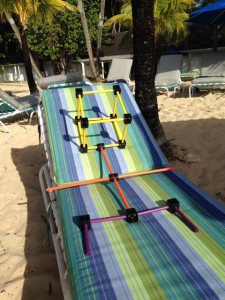Teachers can use the INTOOBA Construction Kit in many ways in their classrooms. They can see how their students are thinking while teaching collaborative skills in mathematics:
Category Archives: Uncategorized
INTOOBA Construction Kit has added instructional videos on You Tube:
Click HERE for You Tube
My article on thinking and collaboration: HERE
The Boulder Center for Interactive Learning at Dawson (BCILD) is building models for how schools can fully integrate themselves into their local communities. All sections of society benefit when K-12 schools think of themselves as an integral part of their local community, communities embrace schools, and students understand that their learning has real world relevance.
STEM in school HERE
Photos of student projects HERE
Design Thinking, Critical Thinking and other forms of collaborative group work have become popular methods of inquiry in many classrooms. Vital to the success of this work is the ability and willingness of students to: share ideas freely, be open to compromise, be willing to let a strongly held belief go in order to further group progress and consensus, and to realize that different inputs lead invariably to different results.
Using the INTOOBA Construction Kit, I have created a largely non verbal classroom exercise where these topics can be investigated. Establishing non verbal parameters dramatically illustrate how students can communicate the abovementioned concepts through thought and action.
Click HERE for INTOOBA Construction Kit
Overview:
The purpose of this exercise is to show young learners how they can develop collaborative skills for group project work. Students learn:
• how to appreciate the input of others
• how to give up firmly held ideas to reach consensus
• that different inputs/circumstances/variables lead to different outcomes
Teachers can see how students actively tackle ideas through group manipulative work.
Exercise:
This exercise is done in three non verbal stages, followed by a discussion of the process and outcomes.
The teacher gives students, in groups of 2-6, a task to complete. Using the INTOOBA Construction Kit, students can build a spacecraft, a chair, a bridge. The teacher puts the manipulative material in front of the students, and explains that this process occurs in three non verbal steps.
Step 1: Student starts by picking up a manipulative and adding a piece to it; it is then passed to the next student in rotation until the task is complete. Students may only add one piece to the construction. Upon completion, a visual image of the product is captured for future comparison.
Step 2: The same process is repeated. Only this time, the student may take a turn either by adding a manipulative to, or taking one off, the construction. Capture image.
Step 3: In this final round, students may do either or both adding and subtracting a piece. Capture image.
Class discussion to follow:
• What did it feel like not to be able to communicate verbally?
• What did it feel like if your item was removed by a subsequent participant?
• What did it feel like to remove a piece?
• Discuss how the three outcomes varied and why.
Explorers are taking to the high seas again in two new Kon Tiki rafts. This represents a wonderful learning opportunity for K-12 students in the areas of science, travel, exploration, rafts, history!
Click HERE for Kon Tiki 2!
6th grade students at Dawson School in Lafayette, CO collaborated with Western Disposal, a local business, in a community problem solving by design exercise to find an actionable solution to trash management: Click HERE for article.
This effort illustrates how school students can partner with local businesses to try to find solutions to local community challenges. BCILD is committed to helping schools integrate critical thinking, design thinking, and other problem solving techniques into classrooms through increased interactions with local community members.
School and Community – An Interactive Learning Experience
Sixth grade students were studying the California Gold Rush of the 1800s. They had to decide whether they were going to be miners or storekeepers. BCILD arranged for local entrepreneurs to come into the classroom to share their experiences in starting businesses. After students had formulated their plans, the group of business professionals (investment bankers, sole proprietors, and venture capitalists) from the community participated in an investor panel, vetting investment proposals. These investors listened to student proposals and questioned them as they would any pitch in a real world business setting. Students were urged to consider risk factors, financial budgets, earnings to debt ratios, and marketing.
By bringing community members into the classroom, students were empowered as they experienced genuine interactions. They were invigorated by relevant discussion. Students approached the material they were learning with a level of sophistication and maturity, uncovering new skills in negotiation, quick thinking, precise listening, careful word choice, teamwork, deliberate questioning, critical thinking, and analysis.
Students, teachers and professional community members came away from the project impressed by the learning and practice the students experienced. Their due diligence, coupled with the inspiration of business people in the classroom, expanded the students’ learning, solidifying not only the lessons of the demanding times of the Gold Rush years, but also lessons of business and the entrepreneurial quest. Additionally, students learned how to communicate respectfully, how to collaborate with team members, and how to set forth and defend those proposals with perseverance and quick thinking. These are skills we want today’s students to learn and practice, so that their messages are impactful and clearly articulated.

